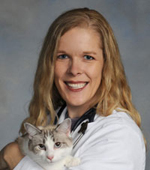Gonzalo Erdozain writes:
Yes, dogs can get salmonellosis, but I won’t go there because Dr. Weese in Guelph already did. But on Thurs., the American Veterinary Medical Association (AVMA) passed a proposed policy to recommend pet owners avoiding feeding their pets raw or undercooked diets.
There will be hate mail.
“The AVMA discourages the feeding to cats and dogs of any animal-source protein that has not first been subjected to a process to eliminate pathogens because of the risk of illness to cats and dogs as well as humans. Cooking or pasteurization through the application of heat until the protein reaches an internal temperature adequate to destroy pathogenic organisms has been the traditional method used to eliminate pathogens in animal-source protein, although the AVMA recognizes that newer technologies and other methods such as irradiation are constantly being developed and implemented.”
I like this statement for many reasons. It is not forcing anybody to stop feeding raw diets, it discourages people from doing so. The reason? It’s a “risk for pets and humans.” As a veterinarian-to-be, I’m well aware that we are the first line of defense when it comes to zoonotic disease transmission. Forget all the stories about how your dog does much better on raw than dry, or how fido went from being blind and bald to seeing and hairy when you switched to raw (ok, made that one up, but just go to the AVMA’s web site and you’ll see the types of responses we’ll have to deal with.
My major concern is to keep my family, dog, patients and patients’ owners healthy.
Just as with human food, raw is rarely a good idea. You can get your pets yourself, and your family sick (via direct feeding or cross-contamination). So, even if you are totally against the evil man, and don’t want to feed your dog specially formulated dry food, you may want to cook it. The same food safety guidelines apply for humans and pets.

 recommendations for pet owners on how to avoid Salmonella infection in pets; that’s good too.
recommendations for pet owners on how to avoid Salmonella infection in pets; that’s good too. The American Veterinary Medical Association
The American Veterinary Medical Association